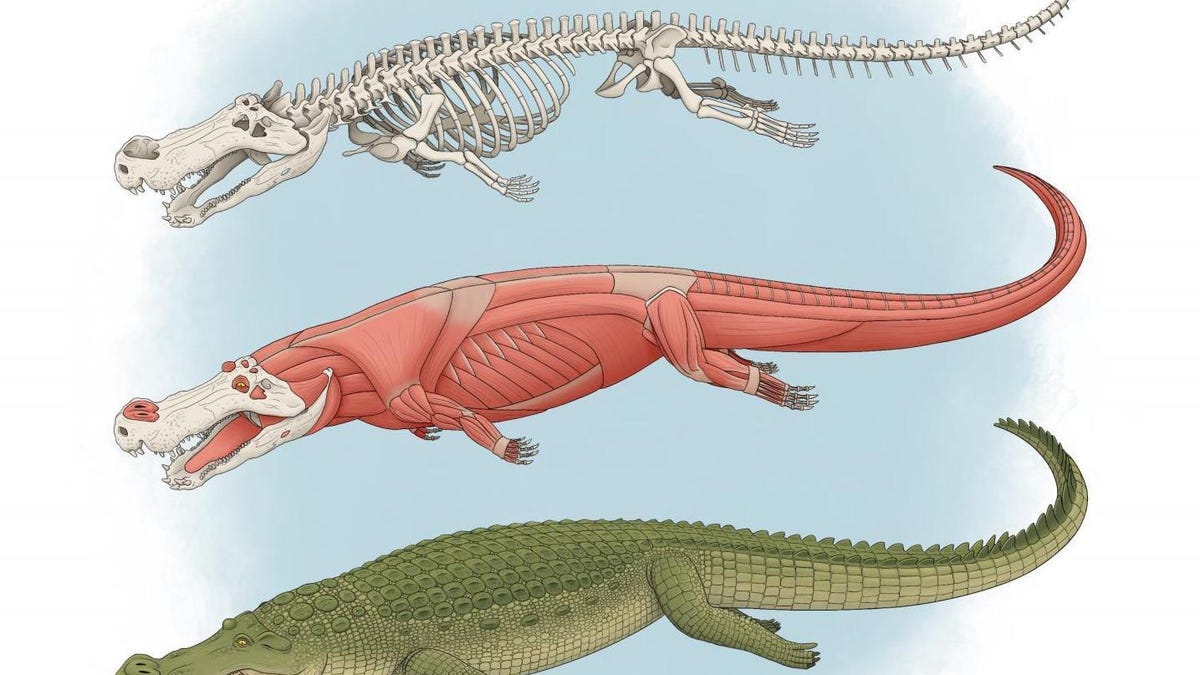Ancient 'terror crocodile' had teeth the size of bananas
Scientists take a new look at the extinct, jumbo Deinosuchus and find it truly lived up to its name.
Let's turn the clock back millions of years to a time when crocodiles as long as buses lived in the Americas. A new study of Deinosuchus fossils reveals more details of what these mind-boggling predators looked like, and how they behaved.
Deinosuchus, which can be translated as "terrible crocodile" or "terror crocodile," ate dinosaurs, notes a paper published in late July in the Journal of Vertebrate Paleontology. The massive animals lived between 75 million and 82 million years ago and would have been at the top of the food chain.
"Until now, the complete animal was unknown. New specimens reveal a bizarre, monstrous predator with teeth the size of bananas," said lead author Adam Cossette in a release from journal publisher Taylor & Francis on Monday. Cossette is a vertebrate paleontologist at the New York Institute of Technology.
These fossil specimens have given researchers a peek into the mouths of Deinosuchus.
Cossette and paleontologist Christopher Brochu at the University of Iowa studied cranial fossils and bite mark evidence to build a more complete picture of Deinosuchus, which was more closely related to alligators than crocodiles.
The paper helps to clarify three different known species of Deinosuchus: Deinosuchus hatcheri and Deinosuchus riograndensis (which ranged from Montana to northern Mexico) and Deinosuchus schwimmeri (from New Jersey to Mississippi).
While Deinosuchus' reputation as a fearsome predator is now sealed, the animal remains mysterious in many respects. The researchers highlighted two large holes on its snout that had an as-yet-unknown function.
"It was a strange animal," said Brochu. "It shows that crocodylians are not 'living fossils' that haven't changed since the age of dinosaurs. They've evolved just as dynamically as any other group."
The new understanding of Deinosuchus fits in well with some other recent scientific insights into extinct croc and gator relatives. Researchers found an ancient crocodile that walked on two legs and traced the disappearance of massive Australian crocs to fires and habitat loss.
If you think today's alligators are intimidating, you can at least take comfort in knowing Deinosuchus isn't prowling the waterways of the modern world. "Deinosuchus was a giant that must have terrorized dinosaurs that came to the water's edge to drink," said Cossette. But that's all in the past.


